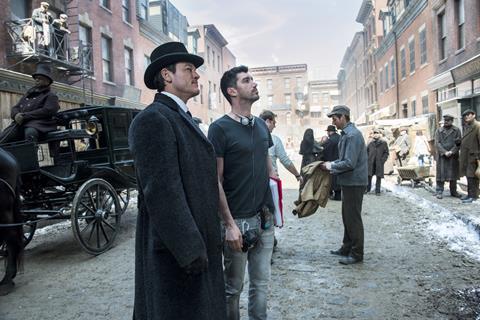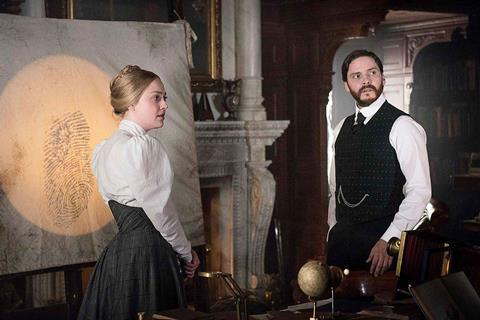For TNT’s 19th-century-set drama The Alienist, executive producer Jakob Verbruggen was tasked with bringing Gilded Age New York to life.

There are four main characters in The Alienist: three human and one a city. Getting the complexities of all four across to an audience was the job of executive producer and main series director Jakob Verbruggen.
The title character of the dark 10-part period thriller, which is produced by Paramount Television and Studio T for the TNT cable network, is Dr Laszlo Kreizler, an ‘alienist’ — as psychiatrists were known when the discipline was in its infancy at the end of the 19th century - on the trail of a ritualistic killer who mutilates young boys.
As portrayed by German-Spanish actor Daniel Brühl, Kreizler is “a crusader, a pioneer who introduces new ideas into the world,” says Belgium-born Verbruggen. “He allows the audience to witness the birth of psychiatry and the birth of profiling and forensics.”
Helping Kreizler is what Verbruggen describes as “an unlikely group of heroes” including a newspaper illustrator and “romantic underachiever” (played by Luke Evans) and an ambitious police secretary (Dakota Fanning) who is “finding her own identity in a male-dominated world”.
“They all have inner demons,” says Verbruggen of the title characters’ cohort “and it’s Kreizler who forces them to confront their demons so they can understand the greater evil they are chasing.”
The tale’s unsung heroes, meanwhile, are the boy prostitutes who dress as woman to attract clients and, in doing so, become potential targets of the series’ psychologically twisted killer. Because, says Verbruggen, The Alienist “is also a story about childhood. How we are raised affects what kind of person we become, and that’s something that Kreizler, as an alienist, will understand.”
Big city

The series’ fourth important character is the city of New York itself, as it was during the rapid growth and social upheaval of the Gilded Age (from the 1870s to about 1900).
“New York at that time was a metropolis about to find its own identity,” Verbruggen explains, “facing a lot of issues that are still relevant today — immigration, class division, new ideas, an elite trying to maintain the status quo.”
To recreate the New York of the period, the series (reportedly TNT’s most expensive show to date) shot in the Hungarian capital of Budapest, where there were enough surviving late-19th century buildings to stand in for the grand mansions of the Gilded Age New York elite. To recreate the tenement streets where New York’s poverty-plagued immigrants lived, however, the production had to build a massive set. “We literally created a housing block, four or five streets long,” Verbruggen reports.
“Authenticity was key for all of us,” the director continues. “Me, the actors, the DoP, the costume designer. We became obsessed with doing research, because what was important for us was to create a world that felt visceral but absolutely authentic.”
To put that world and its characters on screen, Verbruggen - whose previous directing credits include The Fall, London Spy, House Of Cards and Black Mirror - adopted a classical visual style with occasional moments of David Lynch-inspired strangeness.
The series “is very realistic, but it’s also about psychology”, Verbruggen explains. “We were trying to get under the skin of these characters, and giving that a visual language was a great exercise. When the camera lingers on their faces, it’s to show how they experience the world, how they feel. And to make the audience uncomfortable. Because the audience is outstaying its welcome, becoming like a voyeur, like the killer does.”
In some of the story’s more intense moments, Verbruggen continues, “the actors are looking almost straight into the camera. They’re addressing each other, but they’re almost addressing the audience. I wanted to make the audience as complicit in this story as the cast members, to put the audience in the middle of everything, so they become part of the story.”























No comments yet